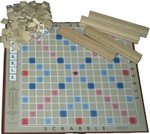Recently I’ve seen a lot of change at work.
“What else is new?” you might ask. “Haven’t you learned by now in your lengthy career that change is the only constant?” Well, these particular changes are larger than usual, resulting in my managing totally different people and product groups, and with a new angle focusing on quality assurance rather than product development.
The opportunity for learning and growth is huge. And I have much to learn, which can be very stressful.
To stay sane and strong, I’m using a number of tried and true coping mechanisms, one of which is to re-read a marvelous book by
Michael Carroll, “Awake at Work: 35 Practical Buddhist Principles for Discovering Clarity and Balance in the Midst of Work’s Chaos.”
You don’t have to be a practicing Buddhist (I am not--I am more of a dabbler) for these principles to be useful. The main point is that clarity can be gained by slowing down just long enough to become present and mindful of what’s going on in the present moment—by being “who we are, where we are right now,” as Carroll puts it.
This mindfulness allows curiosity to replace fear and hope (both of which can cause painful and futile resistance to the reality of the present moment). A calm curiosity can bring unexpected insights about what’s really going on at work and how to better deal with it.
Here are three principles that particularly ring true for me in my reading of the book this time around--although there are many others I find just as helpful:
“Work is a mess.”
“Power is unnerving.”
“First to pacify, last to destroy.”
First, “work is a mess.” Accept that unpredictable surprises and messes are inevitable. Instead of panicing, blaming, or regretting, seize these opportunities to find creative solutions. As Sun Tzu said, victory is achieved not through the execution of previously laid out plans but by being relaxed, open and awake at that moment when surprise strikes—and then trusting your natural intelligence and instincts to know what to do in these crazy moments.
Secondly, “power is unnerving.” As I become accustomed to working with new figures of authority, many of whom seem absolutely certain at all times that they are correct, and at the same time become the new boss for other people who are meeting me for the first time, it is good to remember that authority, either ours or someone else’s, can cause great stress and discomfort. But these very sensations are a signal to be ever more mindful, alert, precise--and to focus on the moment, allowing it to be okay if we’re uncertain, heeding that very uncertainty as a signal to remain fully mindful. (Another principle related to this one is to “welcome the tyrant. ” A bully at work may be just the thing to wake you up and focus you on being right here, right now—allowing revelations you never would have had otherwise).
“First to pacify, last to destroy” is the third concept. Four methods for dealing with conflict are presented, and I find that these are so much a part of my natural instincts that is it great to see them written down and validated. The first is to begin by “pacifying”—being curious rather than resistant to the conflict and listening to discover the other person’s viewpoint. The second is “enriching”-- looking for ways to support another person rather than focusing more narrowly on our own objectives alone--looking for the win/win, the higher level common goal. The third approach Carroll calls “magnetizing”—focusing on compromise, gaining agreement and support, which can only be done by having first addressed the previous two concepts and understanding where the other person is coming from and how you can support that other person’s goals as part of the solution.
The final method for dealing with conflict is “destroying.” This is the hardest one for me—the ability to say no during conflict and walk away if necessary. The point here is that by exercising the previous methods first (pacifying, enriching, magnetizing), there’s a foundation for finding the strength to walk away—not in anger or hate, but as a last resort after all else has failed, knowing you did your best. And, as I’ve always believed, this measure should only be taken as the last resort. Not all people in business believe this; some hold the view that “tough” management can only be demonstrated with an easy willingness to destroy first. But I agree with the idea that being “first to pacify, last to destroy” is the true hallmark of wisdom and courage. Even so, you’ve got to be ready to confidently take this measure when the situation calls for it.
If you are seeking new ways to look at work, get this book--and let me know what you think.














